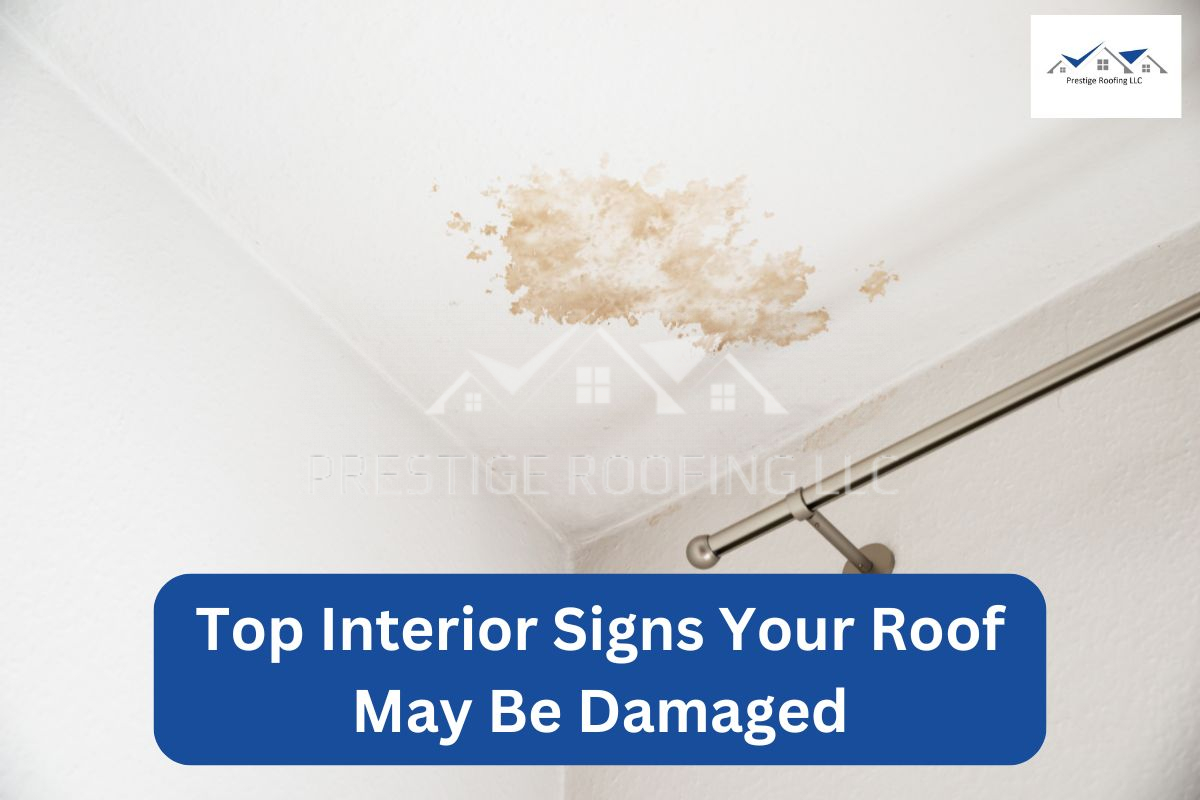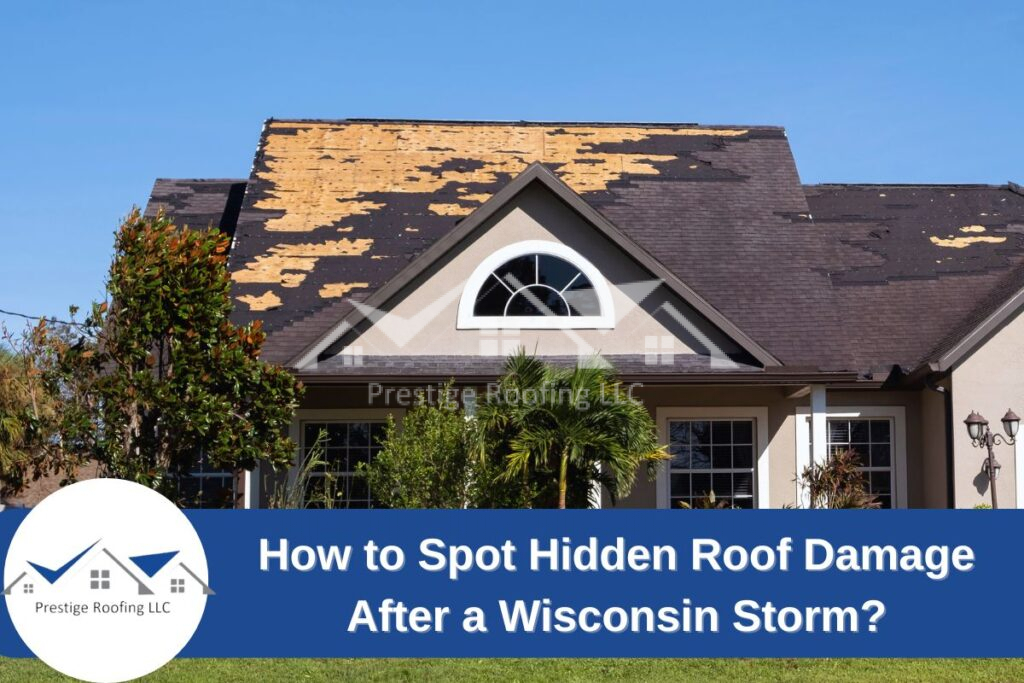
Wisconsin’s weather can be unpredictable, including the intense storms that bring heavy rain, high winds, hail, and even tornadoes. While the aftermath of a storm may leave your yard scattered with debris, your roof may have sustained significant damage. Some damage is obvious, like missing shingles or a collapsed section, but hidden roof damage can go unnoticed until it leads to severe structural damage that costs a lot to repair.
In this blog post, we’ll guide you through how to find signs of roof damage after a Wisconsin storm, focusing first on the apparent signs and then delving into the hidden issues that could be lurking beneath the surface.
Common Types of Storm Roof Damage
Storms bring strong winds, hail, and periods of heavy rain, all of which can wreak havoc on your roof. Here are some of the most common types of damage:
Wind Damage
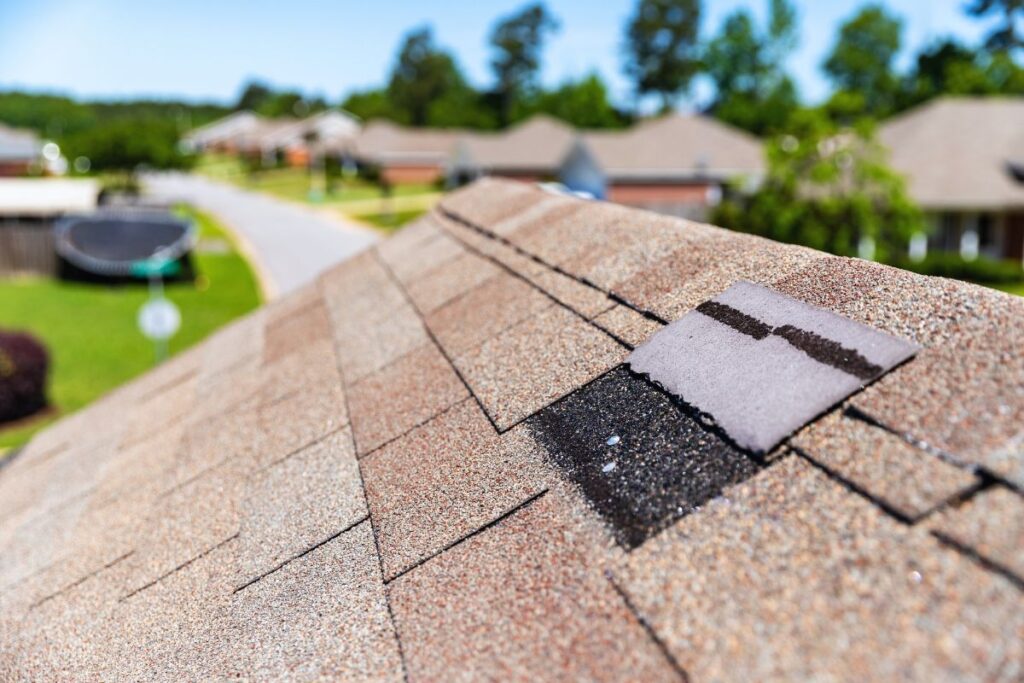
Strong winds (wind speeds that are generally more than 100 mph) can lift and loosen shingles. Storms that are accompanied by high-speed winds cause shingles to break off completely or become misaligned. This exposes the underlayment and roof deck to moisture damage.
This isn’t noticeable at first, but it can soon lead to leaks and other structural issues. Wind-driven rain can also push water under shingles, accelerating the deterioration of your roofing materials.
Hail Damage
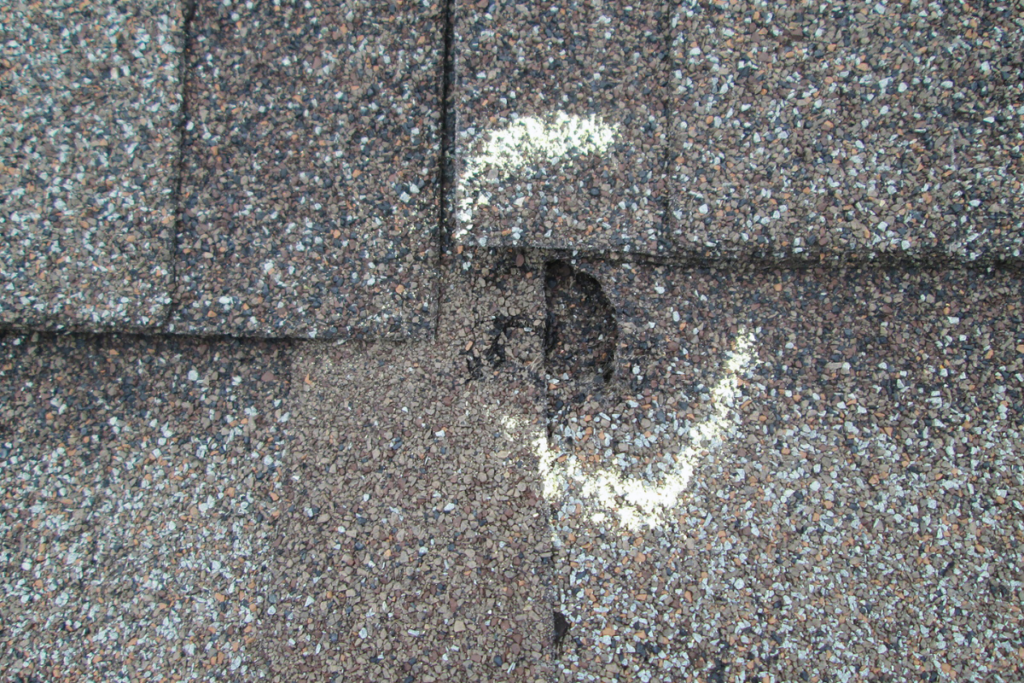
Hailstorms can cause severe damage to your roof. Not only to asphalt shingles but metal and tile roofs as well. Hailstones impact the surface of the shingles, knocking away the protective granules and leaving them vulnerable to UV rays and leas. If you have a metal roof or a tile one, hail can severely dent or crack the materials. Over time, this weakens the roof’s integrity and shortens its lifespan.
Issues With The Gutter And Downspout
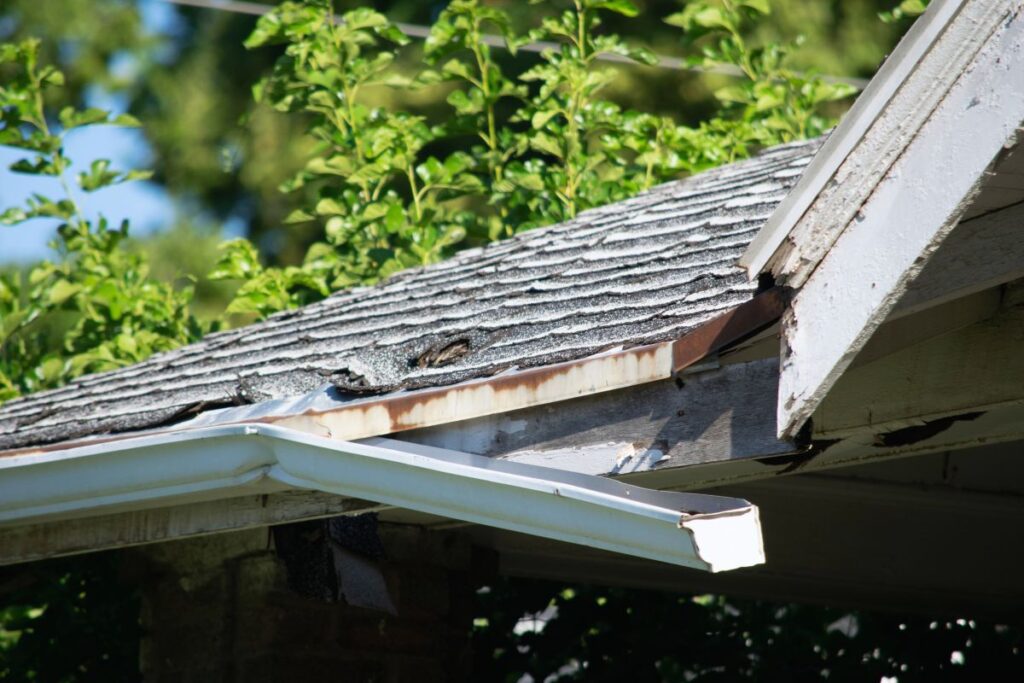
Heavy rain and wind can clog gutters with debris. If the gutters are already in poor shape or are the incorrect size, draining the water can become difficult and cause pooling. If water pools around the foundation due to ineffective gutters, it can lead to leaks inside your home. Strong winds can also dislodge gutters from the roofline, leading to leaks down the siding and foundation.
Also Read: Choosing the Right Gutters for Your Home: A Complete Guide
Structural Stress from Heavy Rain and Debris
Storms often bring significant amounts of rainfall, and if your roof has pre-existing weaknesses, this added stress can worsen them. Water accumulation leads to sagging, cracked rafters, and, in extreme cases, partial collapse. Falling tree branches and debris can also puncture the roof, leading to major repairs.
Flashing Damage and Sealant Failures
Flashing around chimneys, vents, and skylights is particularly vulnerable to storm damage. High winds and water pressure can loosen or crack flashing, allowing moisture to seep into your home’s interior. If the flashing is damaged you may find yourself dealing with rot, mold growth, and insulation damage if it is not replaced in time.
Useful Tips For Spotting Hidden Roof Damage After a Storm
Most roof damage is visible when there is storm damage, but just because certain forms of damage aren’t visible at first glance doesn’t mean they aren’t present. In fact, hidden roof damage can be even more concerning. Here are some tips for identifying less obvious issues before they lead to expensive repairs:
Interior Water Stains and Leaks
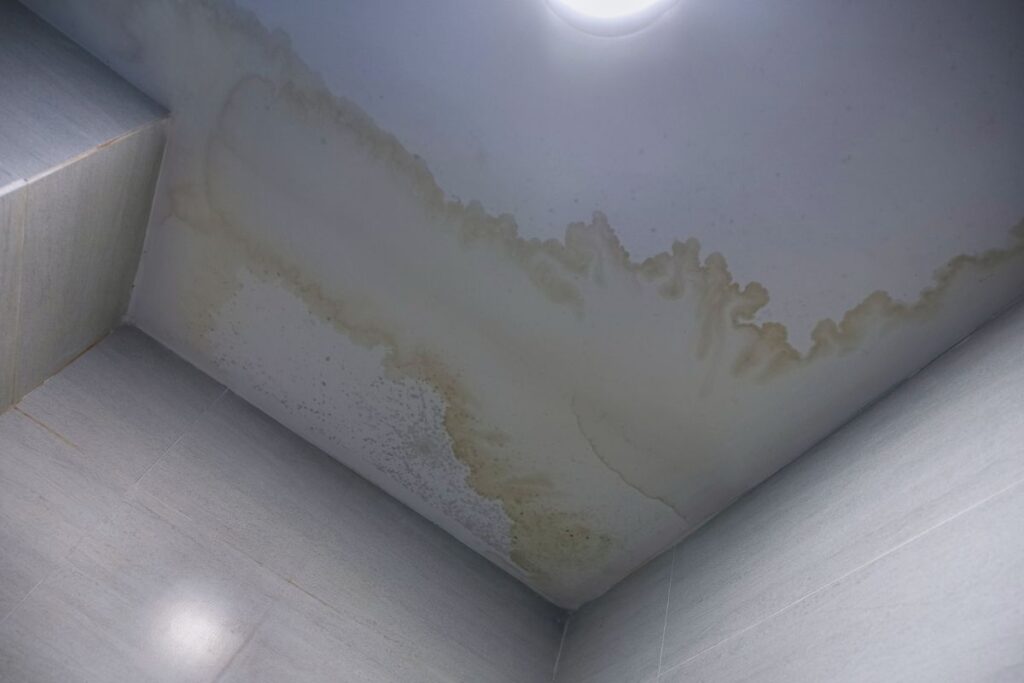
After a storm, your home may seem dry, but hidden roof leaks can cause havoc that’s not noticed until days or weeks later. For example, there might be a minor crack on your roof that allows water in which then travels along beams and accumulates in unexpected places. Even minor leaks can turn into major forms of water damage if left untreated.
If you notice water stains on your ceilings or walls, this is a sign that moisture has penetrated your home’s structure. Musty odors or unexplained mold growth can also signal hidden moisture problems.
What to check for in order to find hidden roof leaks:
- Yellow or brown stains on ceilings or walls
- Peeling or bubbling paint
- Mold or mildew growth in the attic or upper floors
Attic Inspection: Moisture, Mold, and Insulation Issues
Your attic is one of the first places to check for hidden damage after a storm. Storm-driven rain can seep through roof vents, flashing, or minor cracks in the roofing materials. If left unchecked, this moisture can lead to mold growth, and damage your home’s insulation.
Mold and mildew release pores that give off a damp smell, so if you notice this smell, this should be your first indication of moisture intrusion. Mold thrives in humid environments, and any dark spots on the wooden beams or insulation should be inspected immediately. Additionally, wet insulation loses its effectiveness, leading to increased energy costs and potential structural damage over time.
What to check in your attic:
- Wet or compacted insulation
- Mold or mildew smells
- Damp wooden rafters or decking
Subtle Shingle Damage
One of the most common parts of hidden roof damage is your shingles. Even if your shingles appear intact from the ground, there may be hairline cracks, slight lifting, or granule loss that make them vulnerable to future leaks. Damaged shingles may not be immediately visible, but they can allow slow water infiltration over time, leading to rot and interior damage.
Granules from shingles and minor curling at the edges of shingles or soft spots on the roof’s surface could be early warning signs of damage that need attention.
What to check for:
- Granule loss (check gutters for shingle granules)
- Slight curling or buckling at the edges
- Soft spots when walking on the roof (only if safe to do so)
Also Read: How To Replace Missing Shingle?
Hidden Gutter Problems
While visibly sagging or detached gutters are easy to spot, internal blockages or slow drainage can be just as damaging. Clogged gutters prevent proper water runoff, causing rainwater to back up under the shingles and seep into the roof decking.
After a storm, check your gutters for signs of accumulated debris, standing water, or ice buildup in colder months. Slow-draining gutters can cause water to spill over onto your siding or pool around your home’s foundation.
What to check:
- Ice buildup inside gutters
- Slow water drainage after the storm
- Water stains along the siding
Chimney and Vent Damage
Storms can loosen or crack the sealants around chimneys and vents, allowing moisture to enter your roof structure. Even minor gaps can lead to leaks and significant long-term damage if not promptly repaired.
Check your chimney for missing bricks or deteriorating mortar, as these could be signs of structural weakening.
What to check:
- Loose or deteriorated flashing
- Cracked or missing chimney mortar
- Rust on vent pipes
Why Roof Inspections Are Important For Assessing Storm Damage
All the issues that we talked about above can be hard for you to discover on your own. But for a professional roofing inspector, this becomes much easier. This is why to keep your roof in its best condition, we recommend you to inspect your roof at least twice a year.
Trust Wisconsin’s Roofing Experts for Your Storm Damage Needs
Storm damage can be unpredictable, but your response shouldn’t be. At Prestige Roofing LLC, we specialize in detecting and repairing both visible and hidden roof damage caused by Wisconsin storms. Our experienced team can provide a thorough inspection, recommend necessary repairs, and help you maintain a strong, resilient roof.
Don’t wait until a small issue turns into a costly repair. Contact us today at (920) 791-0414 for a professional roof inspection and storm damage assessment!




